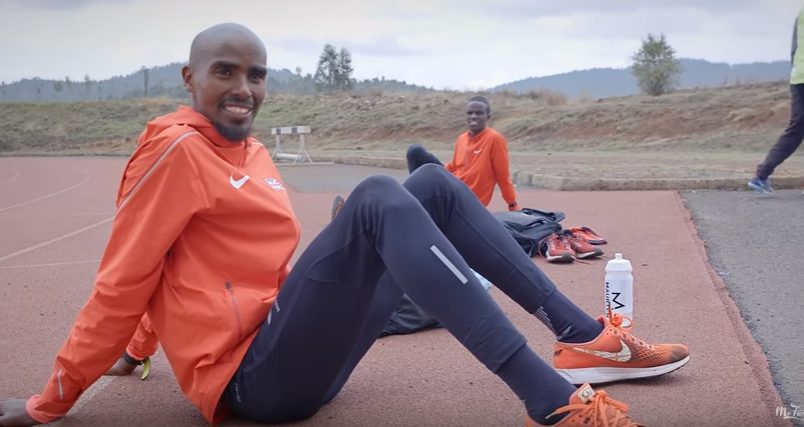New Mo Farah documentary gives a glimpse of the unglamorous life of elite runners
Sir Mo Farah is an Olympic and World Championship gold medalist. He's arguably one of the best known and most well-decorated distance runners currently competing. Yet Farah's life on the road isn't what most would consider to be glamorous or exciting

https://www.instagram.com/p/BkQFpJWlHif/?hl=en&taken-by=gomofarah
Sir Mo Farah is an Olympic and World Championship gold medalist. He’s arguably one of the best known and most well-decorated distance runners currently competing. Yet Farah’s life on the road isn’t what most would consider to be glamorous or exciting.
Why I Run, a Youtube documentary, details Farah’s training and lifestyle in the 20 days leading up to the 2018 London Marathon.
Farah finished third in the race and set a new British record in the event. He finished in 2:06.21.
https://www.instagram.com/p/BkqkgPsF9Er/?hl=en&taken-by=gomofarah
Running isn’t a glamorous sport. Even at the highest level, runners take themselves to extremely remote locations for their toughest training blocks. Zero distraction is the name of the game. The documentary shows the Olympian and his teammates in remote locations, living in close quarters, where their sole purpose is to eat, sleep and train.
Farah says he misses his family while he’s on the road, but that’s what he has to do to be one of the best in the world. The documentary shows an accurate portrayal of what professional running really is.
Farah’s training group isn’t the only team to follow this model. Many runners lead a nomadic lifestyle, moving around the world chasing good weather, good terrain, and hard training blocks.
https://www.instagram.com/p/Bl3F3KwFsDs/?taken-by=aseccafien
Andrea Seccafien is the Canadian 5,000m champion. Seccafien relocated to Australia nearly a year ago – she now trains with the Melbourne Track Club. The 5,000m runner says her coach loves remote locations. “Nick, our coach, really likes remote. We don’t go to Flagstaff or St. Moritz anymore which are more populated by runners and the general public. Our group is currently stationed in Hoyos del Espino. This isn’t a place that people go to train. We’re probably the first runners that have ever stepped foot here. We train in remote locations so that we have nothing to do.”
RELATED: Melbourne versus Toronto with Canadian 5,000m champion Andrea Seccafien
Seccafien continued, “It’s at altitude. It’s rural Spain. There are lots of farmers and animals milling about. We stay in this little tiny town. There’s a couple of hotels and bars, and that’s it. This is essentially a camping spot.”
She joked, “For example, Flagstaff feels quite metropolitan compared to where we are now.” Flagstaff, Arizona, where many runners station themselves in the spring, has a population of 71, 000 people.
https://www.instagram.com/p/Bl8MyeKBVVB/?taken-by=gengen_lacaze
As far as accommodation goes, Seccafien’s team stays in a small hotel. They share rooms and sleep in single beds. They have one window that faces a courtyard, “It’s extremely hot.”
But like Farah, Seccafien isn’t complaining. “This gets us really fit for tough races. It’s really remote and it’s really quiet. There isn’t pressure to do anything which really helps with recovery. I’ve come to love it – I come here and I suddenly just feel fitter. I think it’s just part of professional running. It makes you tough.”
“Running is a really tough sport, it’s tough to get money, it’s tough to get into big races, and I’m just getting tougher.”


